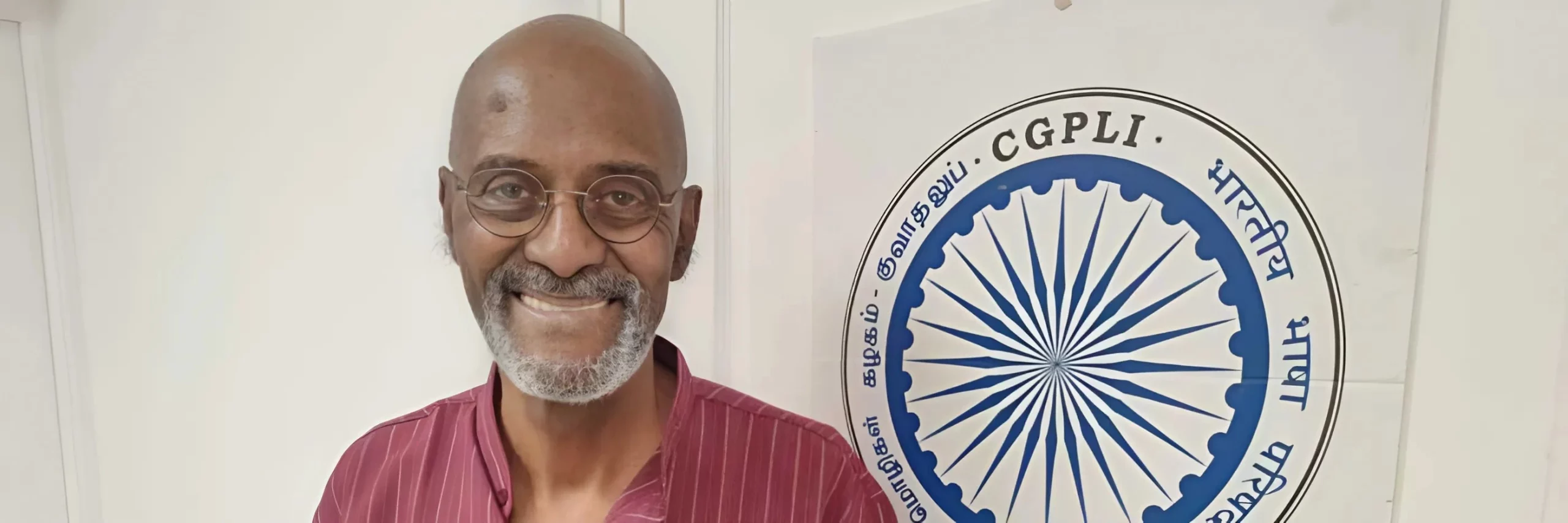(November 5, 2024) In 2024, marking 170 years of Indian migration to Guadeloupe, Fred Negrit, a fifth-generation Indo-French descendant, became the first from the French West Indies to receive the prestigious Padma Shri award. For over three decades, he has dedicated himself to spreading knowledge about India’s linguistic and cultural heritage among expatriates and French citizens in Guadeloupe. “This endeavour is crucial not just for the Indian community in Guadeloupe but also for enriching French culture with our Indian roots,” he remarked. “The recognition we have received signifies that our mission is acknowledged and supported, benefiting both our community and the broader world.”
As India and France celebrated 25 years of strategic partnership in 2023, Fred’s recognition highlights the deep, enduring ties between India and the French Caribbean. The honouring of his initiatives by the Government of India reflects the strength of cultural connections across oceans and generations.

Fred Negrit receiving Padma Shri award from President Droupadi Murmu
Indian migration to Guadeloupe
Guadeloupe is a French Caribbean island and an overseas region of France, located in the Caribbean Sea. Although geographically distant, it functions as an integral part of France—its residents are French citizens, follow French laws, and use the euro as their currency. Here, Fred has spent decades preserving the Indian heritage his ancestors brought with them when they first arrived in 1854.
Fred’s work as a teacher and linguist is a tribute to these ancestors, who came to Guadeloupe as indentured labourers after the abolition of slavery in France. Their journey was part of a larger wave that saw thousands from India cross oceans to sustain the island’s plantations. Over time, they left an indelible mark on Guadeloupe’s culture, with nine percent of today’s population tracing their roots back to these migrants. Through his dedication to teaching Indian language, art, and traditions, Fred has kept alive the heritage of a community that helped shape the island’s identity.
Integration of South Indian heritage in France
Like most Indo-Guadeloupeans, Fred’s ancestors came from Tamil Nadu, joining over 40,000 indentured workers brought to the island under an agreement between France and the United Kingdom, which ruled India at the time. These early pioneers laid the foundation for one of the largest South Indian communities in the Caribbean, now numbering approximately 35,617 people of Indian descent in a population of under 396,000.
Over time, the Indo-Guadeloupean community gradually integrated with the local population, resulting in a fading of Indian languages and customs. Many, like Fred, have adopted French and Christian names. About three decades ago, Fred realized that just few Indo-Guadeloupeans spoke Tamil or other Indian languages, and he decided to change this. Since then, he has made concerted efforts to maintain cultural ties, reconnecting Guadeloupe’s Indian-origin community with their heritage while sharing Indian cultural practices with the broader community.

French nationals with their Hindi diploma certificates
Negrit has also worked to establish official links with India, including initiating a twinning arrangement between the city of Basse-Terre and Pondicherry. Twinning, a partnership between cities in different countries, aims to promote cultural, educational, and economic exchanges. This connection between Basse-Terre and Pondicherry enables mutual visits, cultural events, and joint programs that celebrate shared heritage, further strengthening ties between Indo-Guadeloupeans and their ancestral homeland.
Initiatives to promote Indian culture in Guadeloupe
“I began as a student of Indian culture,” recounted Fred, speaking about his award-winning initiative. With 35 years of service as a teacher at a government school and retiring as a vice-principal, his passion for teaching inspired him to start free classes in Indian languages at his home. Later, with like-minded individuals, he began conducting linguistic and cultural classes in a few local schools, starting with simple word dictations and gradually increasing the complexity of language learning.
“This initiative wasn’t just about cultural promotion; it was also about preserving the identity of Indians in the region,” he shared. “Over time, with support from people in India, our efforts have strengthened.”
Hence what started as a modest effort soon grew into something significant. Fred also helped establish the Conseil Guadeloupéen pour les Langues Indiennes (Council for Indian Languages) in 2002, alongside elderly Indian-origin natives dedicated to preserving their heritage. He served as the founding president of the council for 22 years.
“We decided to form an association to promote Indian languages and culture—mainly Sanskrit, Hindi, and Tamil, and later started promoting other Indian languages” shared Fred, who has earned a Hindi Pravesh Certificate from the Central Hindi Directorate in New Delhi.

Additional initiatives
In the Caribbean, another nation Trinidad and Tobago serves as a central hub of Indian culture. Fred Negrit has even reached out to the Indian community there, collaborating on short-term projects to further his mission of preserving and promoting Indian heritage in Guadeloupe.
He also runs a magazine called West India, which serves as a platform for exchange and information, primarily focused on Indian languages and culture in the diaspora. West India covers a range of topics, including community news, literature, educational resources, language learning, and cultural events. With a growing presence on social media, the magazine is a space to share and promote Indian heritage within the Caribbean and beyond.
Fred Negrit is also an active member of Friends of India, the oldest association of Indian culture in Guadeloupe that offer a variety of cultural activities like workshops, dances, conferences, exhibitions, and more. “The association works in partnership with other associations to carry out projects such as the commemoration of the arrival of the first Indians at the Monument of the First Day (Darse de Pointe à Pitre), the World Day of Non-violence, and other significant events,” he informed.
Influences of childhood
“I was raised by my grandmother,” Fred shared, reflecting on how her deep-rooted Indian upbringing greatly influenced him as a fifth-generation descendant. “That’s likely where my initial interest in this culture began. It was also fuelled by the diverse experiences I encountered growing up—her stories, the languages I didn’t fully understand, and the captivating traditional dances of India.”
Over time, he developed a network of Indian natives who further inspired him to preserve this heritage. Fred’s motivation is driven by a desire to reclaim what has been lost. While early Indian migrants managed to retain some aspects of their culture, much has faded across generations, particularly the languages. His mission is to revive and protect these languages and cultural identities, ensuring they remain an integral part of Guadeloupe’s heritage.

Striding past challenges
“In the initial phase, we had to convince people of Indian origin to keep the language of their ancestral roots alive,” he recalled. “These days, our classrooms are diverse, with learners from all walks of life—not only those with Indian connections but also people who aren’t of Indian origin but want to explore Indian language and culture,” he shared.
Fred has managed to reach a wide range of learners, from ages eight to 80. The Council for Indian Languages, located on Rue Chemin-Neuf, offers diplomas that certify two years of study, with exams evaluated in India.
However, it remains challenging for Negrit and his team to spark interest in learning Indian languages, as they are not spoken in daily life in Guadeloupe. “They’re only used in religious rituals, and young people don’t see the value in learning them,” he mentioned.
“Our struggle is to convey the importance of these languages to young people as part of their cultural identity. In recent years, we’ve received support from the Indian government, which has helped promote Indian languages, culture, and even science—not just as ancient heritage but as a modern influence that can contribute to education and social improvement,” he said.

A well-timed recognition
The prestigious Padma Shri award not only honours Fred Negrit’s decades of dedication but also raises awareness of his mission, inspiring young Indo-Guadeloupeans to join him in preserving their culture.
This recognition is especially meaningful as it comes during the 170th anniversary of Indian migration to Guadeloupe.
A compassionate individual, Fred Negrit has also been associated with the Red Cross for the past two decades, receiving a gold medal for his selfless service. Over the years, he has received numerous other awards for his cultural initiatives.
Fred Negrit’s journey is a powerful reflection of the pride and dedication of the Indo-Guadeloupean community, representing a legacy of cultural preservation that has endured through generations. His efforts have not only connected the past with the present but have also laid a path for future generations to reconnect with their heritage. Honouring Fred with a Padma Shri is a celebration of 170 years of Indian heritage in Guadeloupe.





